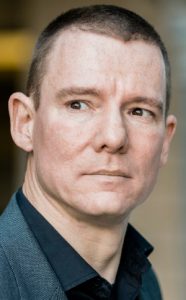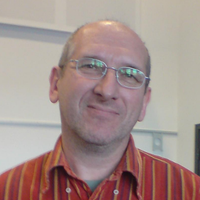 I have talked extensively about the fediverse, the decentral web, FAAMG alternatives and big tech censorship. My blogs offer a compelling overview and I have done work & stories for Robert David Steele about the decentral web. So you may ask yourself, after all this talk about going decentral and web 3.0, how do you do it Steven? This guide is meant to give an answer to that. And I will try to get as clear and as dummy-proof as I can get. This is intended to be a one-stop shop from A to Z. I might forget a thing or two along the way so this will probably receive some updates in the near future.
I have talked extensively about the fediverse, the decentral web, FAAMG alternatives and big tech censorship. My blogs offer a compelling overview and I have done work & stories for Robert David Steele about the decentral web. So you may ask yourself, after all this talk about going decentral and web 3.0, how do you do it Steven? This guide is meant to give an answer to that. And I will try to get as clear and as dummy-proof as I can get. This is intended to be a one-stop shop from A to Z. I might forget a thing or two along the way so this will probably receive some updates in the near future.
Create your own Web 3.0 server : One way to do it
Comments on the Concept Below the Fold
 MARTIN GEDDES: We have lots of useful ingredients. But not all or enough to achieve what we need to do.
MARTIN GEDDES: We have lots of useful ingredients. But not all or enough to achieve what we need to do.
We are missing some important bits. Think of the “Windows for distributed and federated apps” that takes away all the design and operational complexity from developers, for example. Think of the “next gen browser” that does all that “do you wand cookies and accept these terms” kinds of negotiations for you.
Plus it doesn't help that we're trying to use “network materials” that are the equivalent of river mud, and mud huts only go to 3 storeys. Brick to about ten, and then you need glass and steel. That implies proper “materials science” and real engineering. Those are lacking. There isn't even a unit fo supply and demand for broadband as a whole branch of mathematics has been overlooked. Imagine the oil industry if it lacked the concept of measuring a barrel!.

MICHEL BAUWENS: Thanks for the request and your trust, but I am not technically savvy enough to comment with confidence on infrastructural matters, but definitely, with a ‘state of exception' not longer even in the hands of nation-states, and free speech in the hands of unaccountable private power, a shift towards decentralized infrastructures is now a big must. My opinion is that we do not need a fully perfect and integrated solution to already move where we can! For example, signal and scuttlebutt.
 ROBERT STEELE: I don't want to comment at this point, other than to say that my constant disappointment from the days when I helped create the Artificial Intelligence Staff at CIA to my days creating the Marine Corps Intelligence Activity and then to today, with my focus on creating a World Brain, is that no one other than Kaliya “Identity Woman” Young has ever really focused on the rights and needs of the end user, and even she stopped with rights (anonymity, identity, privacy, security) and ignored needs. From CIA in 1986 to USMC in 1990's to Amazon in 2007, everyone has refused to address the needs of the individual for IT that augments the human and helps them make sense. In a phrase, centralization is the anti-thesis of individuality and sense-making must be a bottom up collective ecology, not a top down data harvesting and control ecology.
ROBERT STEELE: I don't want to comment at this point, other than to say that my constant disappointment from the days when I helped create the Artificial Intelligence Staff at CIA to my days creating the Marine Corps Intelligence Activity and then to today, with my focus on creating a World Brain, is that no one other than Kaliya “Identity Woman” Young has ever really focused on the rights and needs of the end user, and even she stopped with rights (anonymity, identity, privacy, security) and ignored needs. From CIA in 1986 to USMC in 1990's to Amazon in 2007, everyone has refused to address the needs of the individual for IT that augments the human and helps them make sense. In a phrase, centralization is the anti-thesis of individuality and sense-making must be a bottom up collective ecology, not a top down data harvesting and control ecology.
Smart Nation Vision – By Invitation
Steele, Robert. “Augmented Intelligence with Human-Machine Integrity: Future-Oriented Hybrid Governance Integrating Holistic Analytics, True Cost Economics, and Open Source Everything Engineering (OSEE),” in Daniel Araya. Augmented Intelligence: Smart Systems and the Future of Work and Learning. Bern, CH: Peter Lang Publishing., 2018.
Steele, Robert. “Foreword,” in Stephen E. Arnold, CyberOSINT: Next Generation Information Access, Harrods Creek, KY: Arnold Information Technology, 2015.
See Also: Web 3.0 @ Phi Beta Iota



